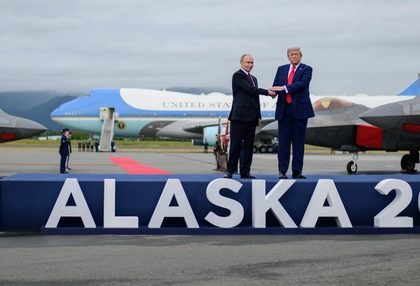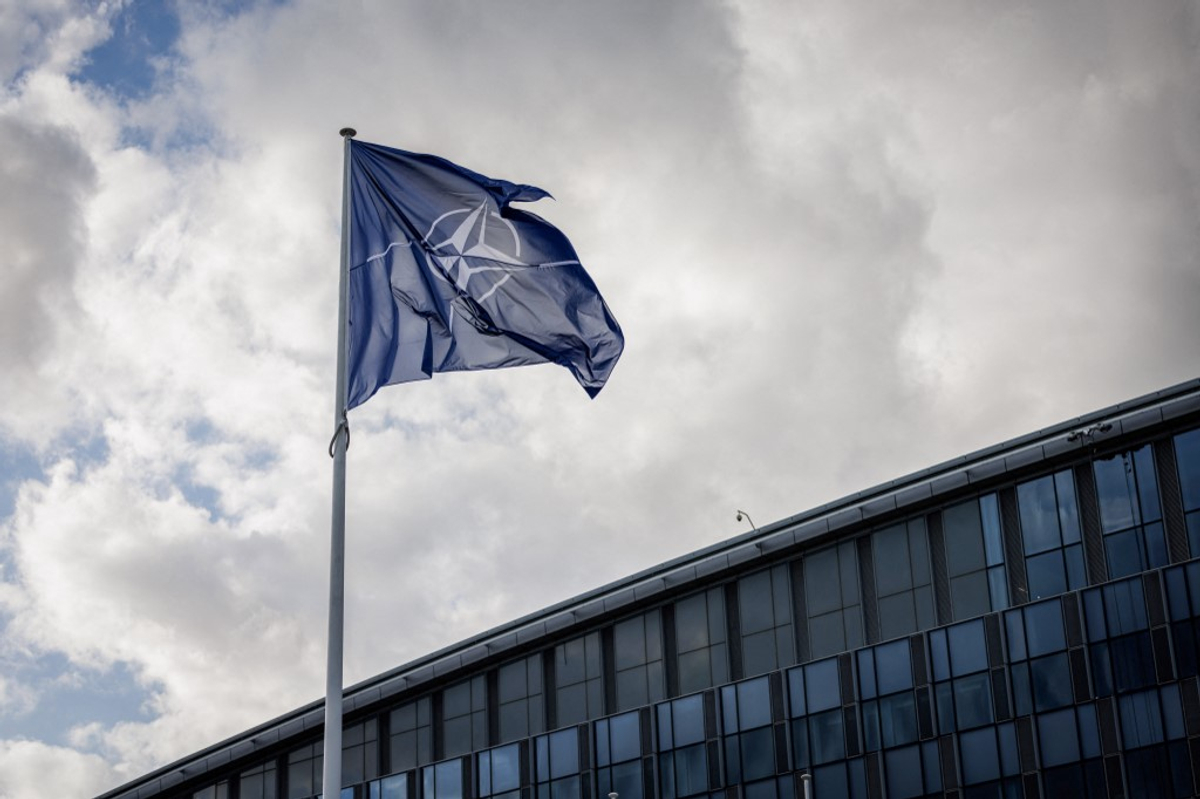On paper, it is the most powerful military alliance in history. In reality, no one is certain whether it is alive or dead. As long as the box remains closed, as long as no one dares to open it and check, the alliance both exists and does not exist. It is a paradox that Schrödinger himself would have appreciated: an alliance with 32 members and more than three and a half million soldiers and military personnel, yet it acts like a news agency – reacting with announcements, communicating concerns, and expressing solidarity.
Since 2022, Russia has been waging an open, aggressive war in Europe. The invasion of Ukraine is not just an attack on a neighboring country but a systemic challenge to the very notion of collective security that NATO represents. Three years later, the question is no longer whether Russia will test the limits of the alliance, but how far it can go without provoking a response.
Follow our coverage of the war on the @Kyivpost_official.
While Russian missiles fly just a few kilometers from Poland’s borders, while Russian drones violate Romanian airspace, and while Russian aircraft enter the skies over the Baltic States without notice, NATO behaves as an entity frozen in its own doctrine. It is as if every violation of a member’s territory must first pass through the slow process of diplomatic procedures, announcements, and “concerns.”
A few months ago, a Russian drone crashed on Romanian territory, a NATO member country. The incident lasted exactly 15 minutes. That was all it took for the response to become a bureaucratic platitude: “There is no evidence that the attack was intentional.”

Other Topics of Interest
‘Playing into Putin’s Hands’ – Expert Warns of Kremlin Manipulation After Tomahawk Rejection
Ex-NATO official tells Kyiv Post that Putin is successfully convincing Trump to stall while dismissing Kyiv’s offer to exchange long-range missiles for its world-leading drone technology.
That statement became the foundation of the new Atlanticism – as long as Russia did not “deliberately” cross the line, the line does not count.
In Slovakia, Poland, Hungary, and Romania, Russian hybrid operations are changing election results, shaping public opinion, funding extremist parties, and influencing the political scene. In Moldova, a country situated between the EU and Russia, that influence has already metastasized into open attempts at destabilization. All this is reminiscent of the time when the Soviet Union did not need to expand with tanks, because newspapers, corruption, unions, and parties did the work.
NATO sees it. Everything is registered, analyzed, and recorded. And then a statement is issued.
Schrödinger’s cat exists as long as the box is closed. When we open it, one of two states becomes reality – the cat is either alive or dead. NATO, however, does not open the box.
Opening it would require acknowledging the validity of one of those two states. If the alliance is alive, it must react. If it is dead, it must reform. Both options require action.
In this respect, NATO today is an ideal construct for a period of political comfort: an alliance maintained without risk, without decisions, and without consequences.
Reflex absence
When Russian aircraft repeatedly entered Polish airspace, the response was not military but semantic. Instead of declaring that a member’s territory had been violated, Brussels announced that “there is no confirmation of hostile intent.” It is as if the violation of sovereignty is measured by motive rather than by fact.
In such a world, NATO exists as a thought experiment – a concept that is both necessary and superfluous. Member states fund it, reference it, and hold summits and parades, but when a real threat emerges, each first considers its own interests rather than the collective agreement.
For NATO to remain vital, it must demonstrate at least a minimum level of responsiveness. Today, however, that reflex is absent.
America, weighed down by its own political turmoil, no longer serves as the driving force of the alliance. US President Donald Trump, in his second term, views NATO primarily as a tool for trade: pay more or face the consequences! Europe, meanwhile, has yet to decide whether it wants its own defense autonomy or prefers to continue living under the increasingly unreliable American umbrella.
The result is a vacuum – strategically, politically, and psychologically. Within it, everything occurs: Russian drones are brought down by the wind, not by air defenses; hybrid attacks are addressed by bureaucracy, not by counterintelligence; propaganda is countered by statements, not by decisive action.
In this environment, even the idea of Article 5 becomes a theoretical construct. “An attack on one is an attack on all” – but what if the attack is not conventional? What if there are no tanks or grenades, but instead codes, viruses, and fake profiles? What if the enemy does not seize territory but seizes the truth?
Testing the lines
For Moscow, this is an ideal experiment. Russian President Vladimir Putin understands that NATO reacts only when there is a clear, spectacular attack that can be displayed on the front pages. Anything below that threshold becomes a permissible area of action. That is why the Kremlin is systematically testing the resilience of the alliance today, millimeter by millimeter, drone by drone, hacker attack by hacker attack.
These include incidents that have so far remained in the gray area but send a clear signal. In early October 2025, the Danish military reported several days of sightings of large, multi-rotor drones hovering over critical military and civilian facilities in and around Copenhagen, including the international airport and a military base on the island of Amager. At the same time, in the Baltic, the Estonian Air Force had to sound the alarm after Russian drones without transponders entered their airspace and remained there for almost twelve minutes.
NATO’s official response? The standard formula: “We are monitoring the situation.”
The limits are changing not because Russia is destroying them, but because NATO is not defending them.
Sarcastic but true: Russia is now the main power checking the vital signs of the NATO alliance. And more and more often, it concludes that they are weak. Because if a drone from Russian territory can land in a NATO member state and this causes only “concern,” if an election campaign is conducted in Slovakia with the open support of Russian bot networks, if channels of political influence are opened in Hungary, Poland, or Romania under the guise of “energy projects,” then it is clear that the alliance is in a state of quantum paralysis.
Every NATO summit today resembles a gathering of doctors admiring a patient’s heartbeat but avoiding looking at a chest X-ray.
The vocabulary is flawlessly coordinated: “unity,” “determination,” and “solidarity.” The photos are carefully staged: flags, helicopters, and leaders in line. Only, there is no content.
If the alliance fails to apply its own rules, ignores systemic violations of its space, and cannot deter, then it no longer exists. Not because it has been formally dissolved, but because it has lost its ability to produce consequences.
In this respect, today’s NATO is closer to a “communication platform” than a military alliance. It functions as a channel for coordination, a bureaucratic framework, and a planning system, but not as a force mechanism. A military alliance that does not use force becomes just a symbol, a metaphor – another cat in a closed box.
Europe itself does not know if it wants to open the box. Most European countries essentially want to keep NATO as a non-committal guarantee so they can talk about shared security without paying for it and have a sense of protection without taking the risk of action.
This explains why every Russian provocation is met with a double chorus: first, “strong condemnation” is expressed, and then it is emphasized that “NATO does not want escalation.” That chorus has become the new anthem of the alliance.
The problem is that the enemy only hears the second part. Russia does not hear condemnation; it hears avoidance of conflict. It does not see concern; it sees fear. And that is why it continues.
In physics, superposition lasts until a measurement is made. In politics, it lasts until an incident occurs that is impossible to ignore.
For NATO, that moment will come sooner or later. It may be a direct attack on an infrastructure facility in a member state, a major cyberattack that paralyzes an entire country, or a Russian drone that shoots down a civilian plane near the border.
Then the box will have to be opened. The question will be: is NATO still alive?
If so, it will have to prove that collective defense means more than collective concern. If not, history will have a simple answer – the alliance died from a lack of reflexes.
Today, NATO is the Schrödinger’s cat of international politics. It exists in theory, but not in practice. It is alive in statements, dead in action.
As long as no one dares to open the box, that paradox will continue—and with it, the sense of false security that Europe has nurtured for years.
In a world where aggression comes not only from the trenches but also from algorithms, lies, and manipulation, an unresponsive alliance loses its meaning. The enemy does not test the borders of territory but the borders of fear and (in)decision.
The views expressed are the author’s and not necessarily of Kyiv Post.
